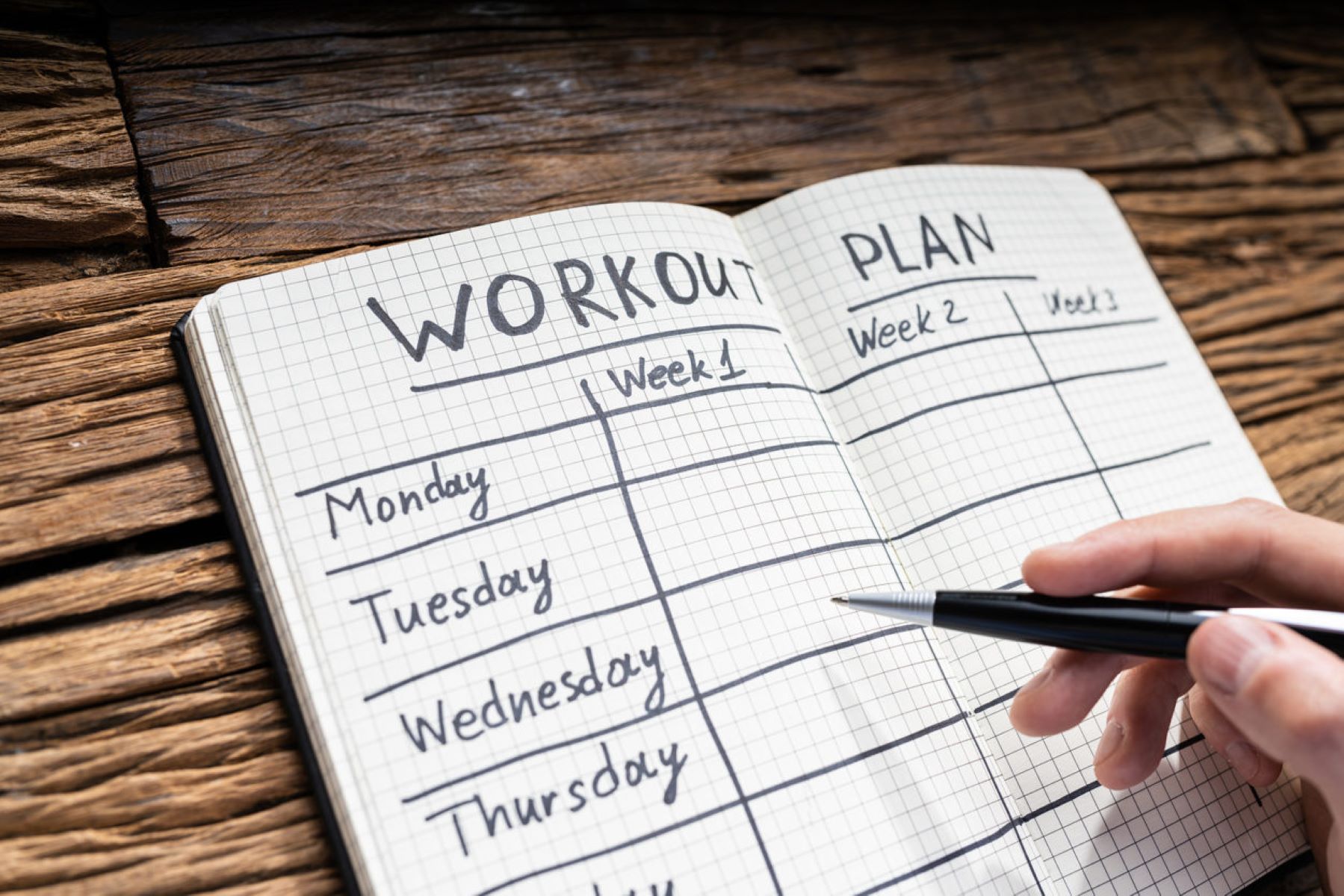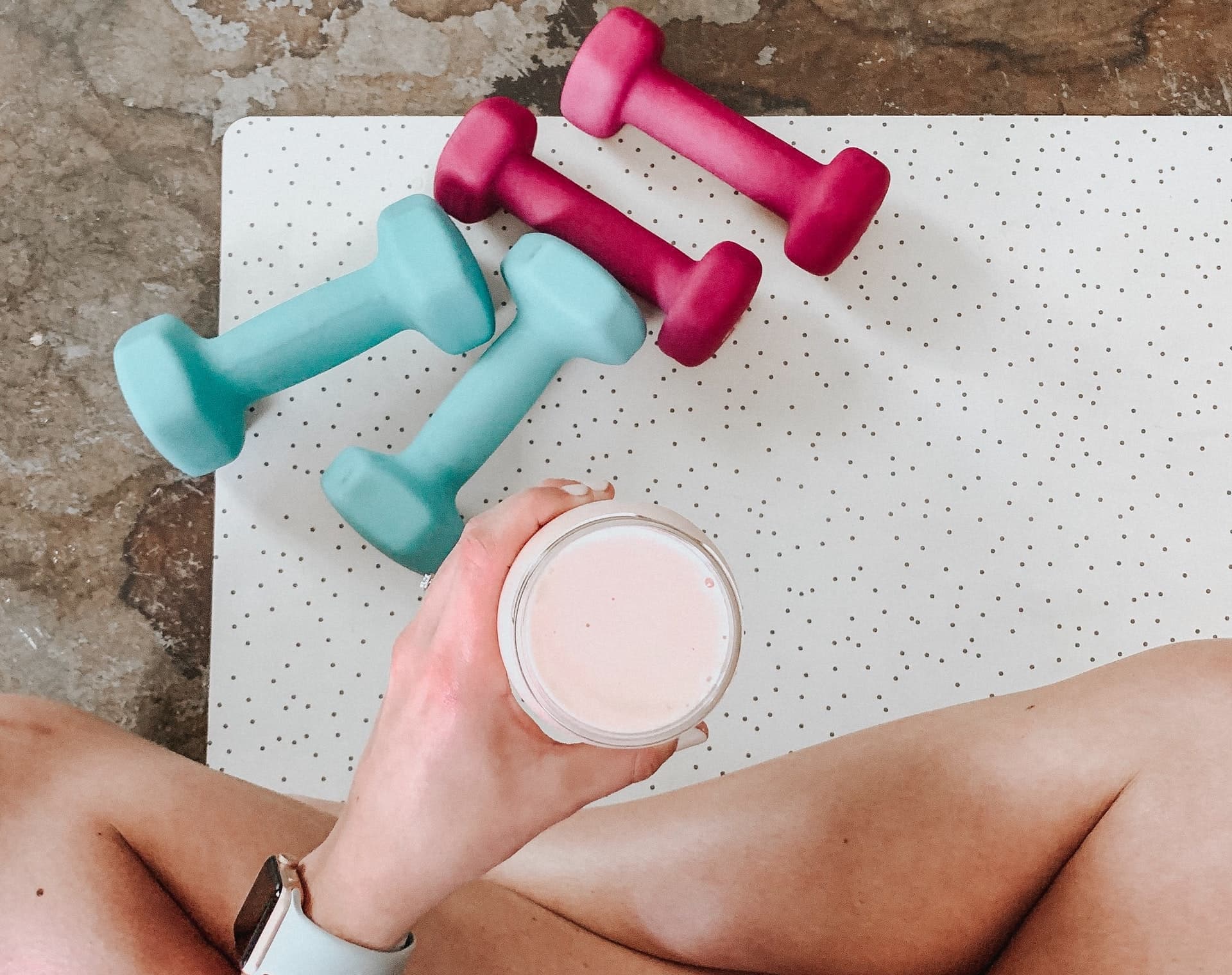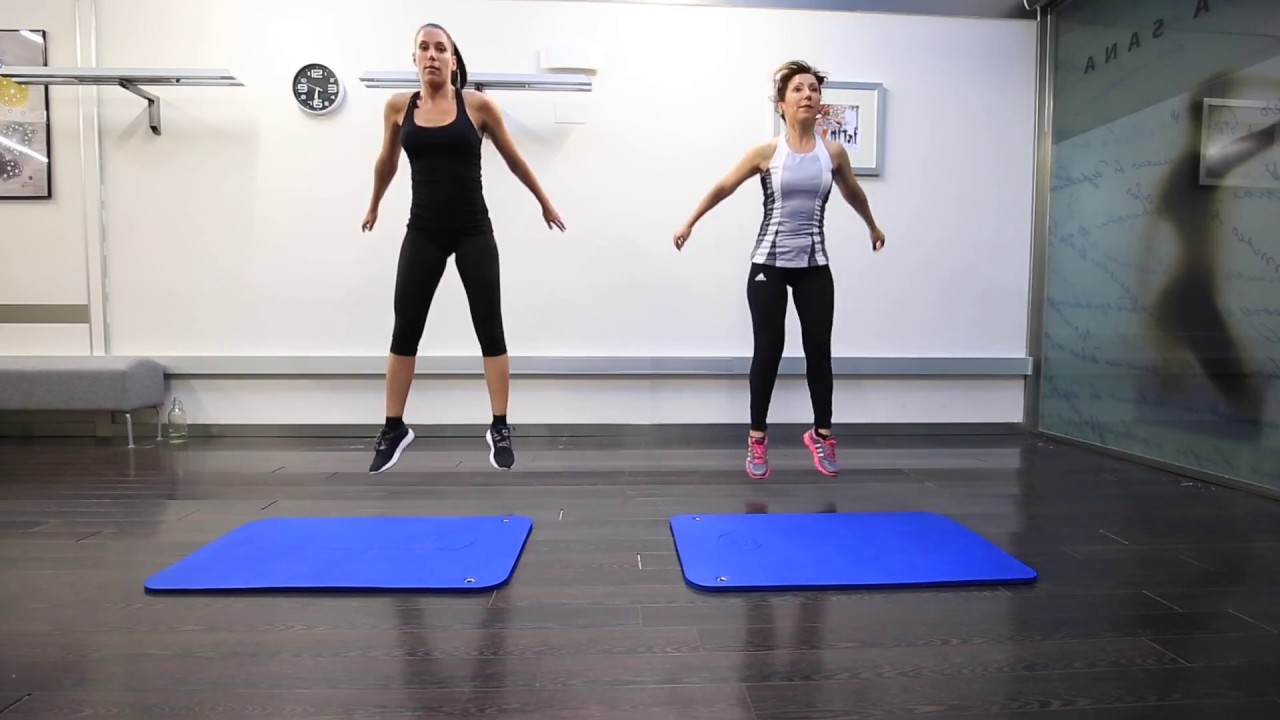How Many Times Should You Workout In A Day
Introduction
When it comes to maintaining a healthy lifestyle, regular exercise is essential. However, one question that often arises is how many times should you work out in a day? The answer to this question may vary depending on your fitness goals, schedule, and individual factors. It’s important to strike a balance between challenging your body and giving it enough time to rest and recover.
There is no one-size-fits-all answer to the ideal workout frequency. It ultimately depends on factors such as your fitness level, time availability, and the intensity of your workouts. Some people may find that working out once a day is sufficient to achieve their goals, while others may prefer to exercise multiple times a day. In this article, we will explore the benefits and potential drawbacks of both scenarios, as well as provide recommendations for finding the right workout frequency for you.
Factors to consider before determining workout frequency
Before determining how many times you should work out in a day, there are several factors that you should take into consideration. These factors will help you make an informed decision and find a workout frequency that aligns with your goals and lifestyle. Here are some key factors to consider:
- Fitness goals: Your fitness goals play a crucial role in determining your workout frequency. If you’re aiming to build muscle and strength, you may need more frequent workouts that target specific muscle groups. On the other hand, if your goal is to improve cardiovascular endurance, you might focus on longer, less frequent workouts.
- Time availability: Consider how much time you can dedicate to exercise on a daily basis. If you have a busy schedule, squeezing in multiple workouts may not be feasible. In such cases, focusing on one high-intensity workout per day may be more realistic.
- Exercise intensity: The intensity of your workouts also impacts your workout frequency. High-intensity workouts, such as HIIT or weightlifting, typically require longer recovery periods. In contrast, low-intensity activities like walking or yoga may allow for more frequent sessions.
- Physical condition: Your current fitness level and overall physical condition should also be taken into account. If you’re just starting out or recovering from an injury, it’s important to gradually increase your workout frequency to avoid overexertion.
- Listen to your body: Pay attention to how your body feels after each workout session. If you consistently feel fatigued, sore, or exhausted, it may be a sign that you’re overtraining. Adjust your workout frequency accordingly to give your body the rest it needs.
Remember that finding the right workout frequency is a personal journey, and what works for someone else may not work for you. It’s essential to experiment, listen to your body, and make adjustments as needed. By considering these factors and taking a mindful approach, you can establish a workout frequency that promotes progress and keeps you motivated on your fitness journey.
Benefits of Working Out Once a Day
Working out once a day offers several benefits that can contribute to your overall health and fitness. Here are some advantages of sticking to a daily workout routine:
- Consistency: By committing to a daily workout, you establish a consistent routine. Consistency is key in achieving your fitness goals, as it allows your body to adapt and progress over time.
- Efficiency: Working out once a day allows you to focus your energy and effort on a single workout, maximizing its effectiveness. You can dedicate a sufficient amount of time to each exercise and push yourself to the limit.
- Time management: If you have a busy schedule, working out once a day can be more manageable. It eliminates the need to find multiple time slots throughout the day, streamlining your routine and making it easier to fit exercise into your daily life.
- Recovery: Giving your body ample time to rest and recover is crucial for muscle growth and overall recovery. Working out once a day allows for sufficient rest periods, reducing the risk of overtraining and increasing your performance in subsequent workouts.
- Mental well-being: Exercise is not only beneficial for your physical health but also plays a significant role in improving your mental well-being. Working out once a day can help reduce stress, improve mood, and enhance mental clarity.
Keep in mind that the effectiveness of working out once a day also depends on the quality and intensity of your workouts. It’s important to design a well-rounded exercise routine that includes cardio, strength training, and flexibility exercises to maximize the benefits of your daily workouts.
Potential Drawbacks of Working Out Once a Day
While working out once a day offers numerous benefits, it’s important to be aware of potential drawbacks that may come with this workout frequency. Consider the following factors:
- Fatigue and overtraining: Depending on the intensity and duration of your workouts, working out once a day can lead to fatigue and overtraining. Pushing your body to its limits every day without giving it enough time to recover can increase the risk of injury and hinder your progress.
- Limited exercise variety: Opting for a daily workout routine might limit your exercise variety. With limited time available for each session, you may not be able to incorporate a wide range of exercises or focus on specific muscle groups as effectively as you would with multiple sessions per day.
- Mental burnout: For some individuals, sticking to a daily workout routine can lead to mental burnout. The pressure to perform a high-intensity workout every day may become overwhelming and make exercise feel more like a chore than an enjoyable activity.
- Lack of rest days: Working out once a day might leave you with limited or no rest days. Rest days are essential for muscle repair and growth. Without sufficient rest, your body may not have enough time to recover, which can lead to diminished performance and increased risk of injury.
It’s crucial to listen to your body and make adjustments as needed. If you start experiencing excessive fatigue, decreased motivation, or persistent muscle soreness, it may be a sign to scale back your workout frequency or incorporate active recovery days into your routine. Striking a balance between challenging your body and giving it enough time to recover is key to long-term success in your fitness journey.
Benefits of Working Out Multiple Times a Day
Working out multiple times a day can provide several benefits for those who are looking to take their fitness to the next level. Here are some advantages of incorporating multiple workout sessions in a day:
- Increased calorie burn: When you split your workouts into multiple sessions, you have the opportunity to burn more calories throughout the day. This can be especially beneficial if your goal is weight loss or improving overall cardiovascular health.
- Varying intensity levels: By breaking up your workouts into multiple sessions, you can vary the intensity levels. You can have a high-intensity session in the morning and a lighter, recovery-focused workout in the evening, allowing certain muscle groups to rest and recover while still maintaining consistency.
- Improved focus and energy: Working out multiple times a day can help to improve your focus and energy levels throughout the day. By incorporating exercise at different times, you can combat midday slumps and increase your mental alertness for better productivity.
- Targeting specific muscle groups: By dividing your workouts into multiple sessions, you can strategically target specific muscle groups. This can be particularly beneficial for those who want to prioritize certain areas of the body or have specific fitness goals.
- Enhanced metabolism: Studies have shown that multiple, shorter workout sessions can have a positive impact on your metabolism. This is because the body has to work harder to recover, leading to an increase in calorie burn even after you’ve finished exercising.
It’s important to note that working out multiple times a day may not be suitable for everyone. It requires careful planning, time management, and consideration of your personal fitness level and recovery abilities. It’s recommended to consult with a fitness professional or personal trainer to ensure that you are structuring your workouts in a safe and effective manner.
Potential Drawbacks of Working Out Multiple Times a Day
While working out multiple times a day can have its benefits, it’s important to be aware of potential drawbacks that may come with this workout frequency. Consider the following factors:
- Risk of overtraining: Working out multiple times a day increases the risk of overtraining. Without proper rest and recovery, pushing your body to its limits repeatedly can lead to fatigue, decreased performance, and increased susceptibility to injuries.
- Time constraints: Incorporating multiple workout sessions in a day may require significant time commitment. Not everyone has the flexibility or availability to squeeze in multiple workouts with their busy schedules.
- Plateau in progress: Over time, your body may adapt to the repeated stress of multiple workouts, potentially leading to a plateau in progress. Without proper variation and periodization, your body may not continue to make gains and improvements.
- Potential mental burnout: Constantly pushing yourself with intense workouts multiple times a day can lead to mental burnout. You may start to lose motivation, feel fatigued both physically and mentally, and find it challenging to sustain this level of commitment in the long run.
- Lack of focus and intensity: Splitting your workouts into multiple sessions may result in a decrease in focus and intensity during each session. With shorter time frames, it can be more challenging to fully engage and push yourself to your maximum potential.
It’s essential to balance the desire for multiple workout sessions with the need for sufficient rest and recovery. Listening to your body, incorporating rest days, and adjusting your training intensity and volume are key to avoiding overtraining and achieving long-term progress.
Finding the Right Workout Frequency for You
The ideal workout frequency varies from person to person, depending on factors such as fitness goals, time availability, and individual preferences. To determine the right workout frequency for you, consider the following guidelines:
- Set clear goals: Define your fitness goals and what you want to achieve through your workouts. Are you aiming for weight loss, muscle gain, or overall fitness? Understanding your objectives will help you tailor your workout frequency accordingly.
- Consider your schedule: Take into account your daily schedule and time commitments. Assess how many workouts you can realistically fit into your routine without sacrificing other important aspects of your life.
- Assess your recovery ability: Pay attention to how your body recovers after each workout. If you’re consistently feeling fatigued, sore, or experiencing lack of progress, it may be an indication that you need to adjust your workout frequency to allow for more recovery time.
- Experiment and listen to your body: Experiment with different workout frequencies and monitor how your body responds. If you find that one approach is not working for you, don’t be afraid to make adjustments and try different approaches until you find what works best.
- Consult a professional: If you’re unsure about how to structure your workout frequency or feel overwhelmed by the options, consider seeking guidance from a fitness professional or personal trainer. They can assess your individual needs and help you design a workout plan that is tailored to your goals and lifestyle.
It’s important to remember that finding the right workout frequency is a process of trial and error. It may take some time to find the balance that works best for you. Be patient, stay committed, and prioritize your overall well-being on your fitness journey.
Recommendations for Workout Frequency Based on Goals
The recommended workout frequency can vary depending on your specific fitness goals. Here are some general recommendations to consider based on common fitness objectives:
- Weight loss: If your primary goal is weight loss, aim for at least 150 minutes of moderate intensity aerobic activity or 75 minutes of vigorous intensity aerobic activity per week. This can be spread out over several days, with a minimum of 3 to 5 sessions per week.
- Muscle gain and strength: For muscle gain and strength development, it’s recommended to focus on resistance training exercises. Aim for at least 2 to 3 sessions per week, targeting all major muscle groups. Allow for a day of rest in between sessions to allow for proper muscle recovery.
- Cardiovascular endurance: To improve cardiovascular endurance, aim for 3 to 5 cardio sessions per week, with each session lasting 20 to 60 minutes, depending on the intensity. You can choose activities such as running, cycling, swimming, or using cardio equipment at the gym.
- Flexibility and mobility: To improve flexibility and mobility, incorporate stretching and mobility exercises into your routine at least 2 to 3 times per week. These sessions can be combined with other workouts or done on rest days.
- Overall health and wellness: For general health and wellness, it’s recommended to be physically active on most days of the week. This can include a combination of cardiovascular exercise, strength training, and flexibility work. Aim for a minimum of 150 minutes of moderate intensity aerobic activity per week, along with 2 to 3 strength training sessions and regular stretching.
Remember that these recommendations serve as general guidelines, and it’s important to adjust them according to your individual needs and limitations. It’s always a good idea to consult with a healthcare professional or fitness expert to create a personalized workout plan that aligns with your goals and considers any underlying health conditions.
Conclusion
Determining the right workout frequency for you is a personal journey that requires consideration of various factors. There is no one-size-fits-all answer, as individual goals, time availability, and recovery abilities differ from person to person. It’s essential to find a balance that challenges your body while allowing for adequate rest and recovery.
Working out once a day can offer consistency, efficiency, and sufficient recovery time. It can be a practical option for those with busy schedules or limited availability. On the other hand, working out multiple times a day can provide increased calorie burn, varying intensity levels, and the ability to target specific muscle groups.
However, it’s crucial to be aware of potential drawbacks such as fatigue, overtraining, and time constraints that may arise from either workout frequency. Listening to your body, monitoring your progress, and adjusting your routine as needed is key to avoiding burnout and maximizing results.
Ultimately, finding the right workout frequency requires experimentation, self-awareness, and a willingness to adapt. Set clear goals, consider your schedule and recovery abilities, and consult with professionals if needed. Remember, the most important thing is to find a workout frequency that is sustainable for you and helps you achieve your desired fitness goals while prioritizing your overall well-being.









